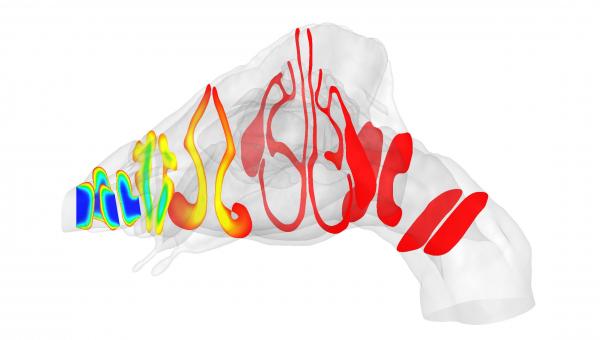



|
TOPICS BONOBO Chimpanzee "Ai" Crania photos Itani Jun'ichiro archives Open datasets for behavioral analysis Guidelines for Care and Use of Nonhuman Primates(pdf) Study material catalogue/database Guideline for field research of non-human primates 2019(pdf) Primate Genome DB 
Primate Research Institute, Kyoto University Copyright (c) |
Japanese Computational fluid dynamics simulation wall model predicting air temperature of the nasal passage for nonhuman primates
Nishimura T, Kaneko A, Mori F & Matsuzawa T.
Abstract
Nasal passages adjust the temperature of inhaled air to reach the required body temperature for the lungs. The nasal regions of primates including humans are believed to have experienced anatomical modifications that are adaptive to effective conditioning of the atmospheric air in the habitat for a given species. Measurements of the nasal temperature are required to understand the airŃÓ┐─onditioning performance for a given species. Unfortunately, repeated direct measurements within the nasal passage have been technically precluded in most nonhuman primates. Computational fluid dynamics (CFD) simulation is a potential approach for examining the temperature profile in the nasal passage without any direct measurements. The CFD simulation model mainly comprises a computational model to simulate physiological mechanisms and a wall model to simulate the nasal passage's anatomical and physical properties. We measured the distribution of temperature within the nasal cavity and made the 3D digital model of the nasal passage with CT scans in Japanese macaques, to develop corrections for the developed wall model based on human properties for predicting its performance in the animals. A convenient correction of the thickness based on body mass allows us to simulate the actual air temperature profile in macaques' nasal passage. The CFD simulations of the wall model corrected with body mass can be applied to other nonhuman primates and mammals. This convenient corrective approach allows us to examine the functional contributions of a specific morphology to the airŃÓ┐─onditioning performance without any direct measurements to improve our understanding of primates' functional morphology and physical adaptations to the temperature environment in their habitat.  Temperature distribution within the nasal passage of a Japanese macaque.
Bibliographic information
Futoshi Mori, Akihisa Kaneko, Teruo Matsuzawa & Takeshi Nishimura*. Computational fluid dynamics simulation wall model predicting air temperature of the nasal passage for nonhuman primates, American Journal of Physical Anthropology. 10.1002/ajpa.24221 Takeshi Nishimura & Akihisa Kaneko (2019) Temperature profile of the nasal cavity in Japanese macaques, Primates 60: 431-435. 10.1007/s10329-019-00741-0 2021/01/28 Primate Research Institute
|